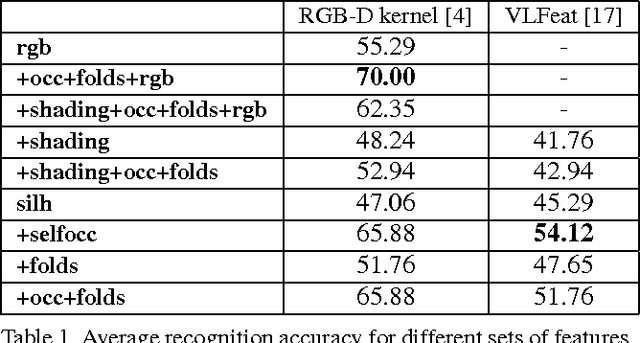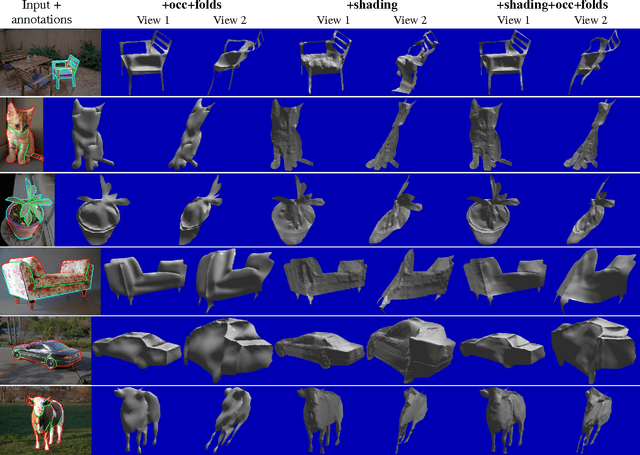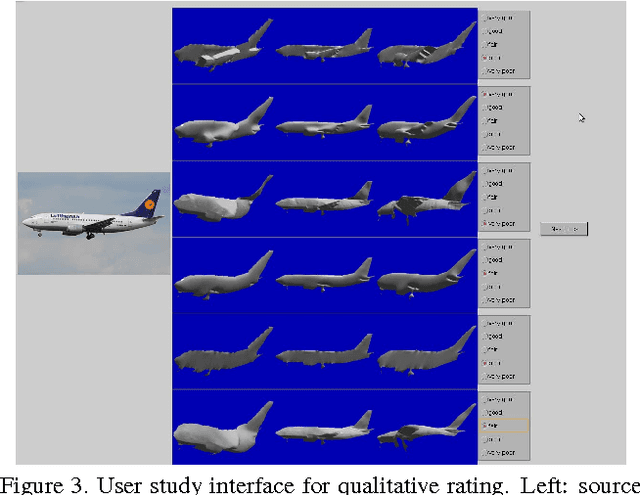Boundary Cues for 3D Object Shape Recovery
Paper and Code
Dec 24, 2019



Early work in computer vision considered a host of geometric cues for both shape reconstruction and recognition. However, since then, the vision community has focused heavily on shading cues for reconstruction, and moved towards data-driven approaches for recognition. In this paper, we reconsider these perhaps overlooked "boundary" cues (such as self occlusions and folds in a surface), as well as many other established constraints for shape reconstruction. In a variety of user studies and quantitative tasks, we evaluate how well these cues inform shape reconstruction (relative to each other) in terms of both shape quality and shape recognition. Our findings suggest many new directions for future research in shape reconstruction, such as automatic boundary cue detection and relaxing assumptions in shape from shading (e.g. orthographic projection, Lambertian surfaces).
 Add to Chrome
Add to Chrome Add to Firefox
Add to Firefox Add to Edge
Add to Edge